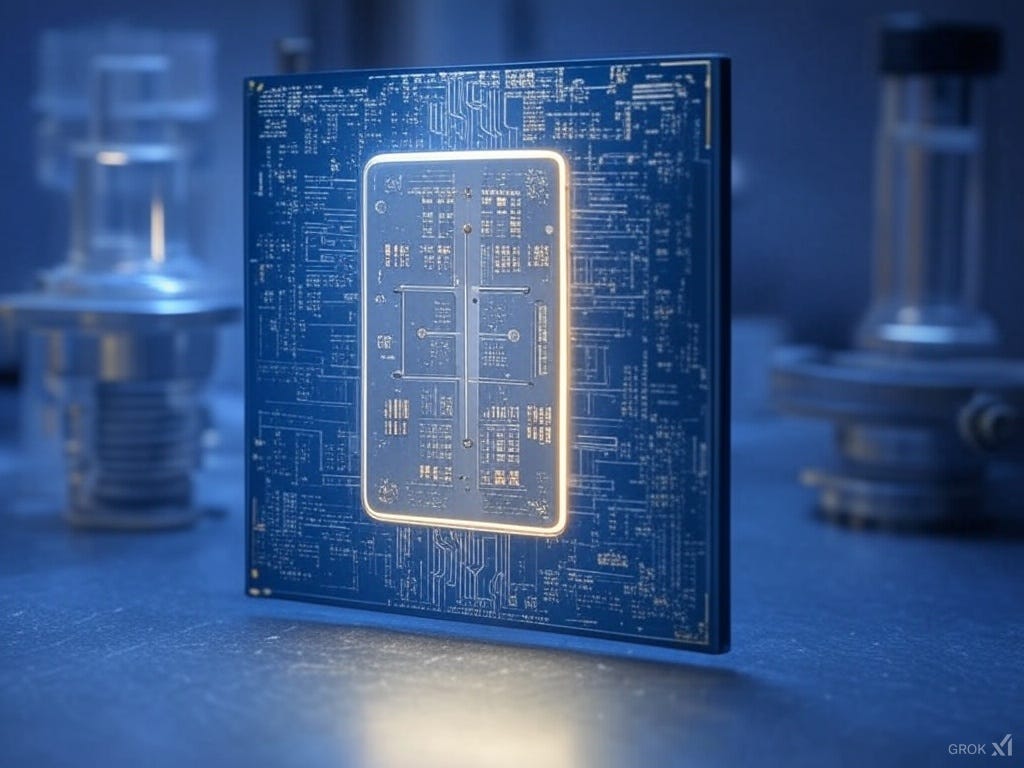02/23/2025 What I Read Last Week
#DigitalInfrastructure news: xAI in Atlanta, Grok 3 is amazing, Bitcoin miner data center expansions, Microsoft's first quantum computing chip, and Robotics startup Figure.
Weekly Edition of curated news about Digital Infrastructure
[Link] Business Insider reports that xAI has quietly built a 2nd mega-data center for xAI in Atlanta with $700 million worth of chips and cables. According to Grok, “the Atlanta data center leverages a $10.1 million tax break over 10 years, facilitated by agreements with Develop Fulton, an economic development agency in Atlanta, finalized in December 2024.”
[Link] Atlas Development has proposed a massive data center campus called Project Springbank in Bartow County, Georgia, about 40 miles northwest of Atlanta. The campus will consist of six buildings totaling 2.274 million square feet and is slated for completion in December 2031.
[Link] Bloom Energy announced an expansion of its longstanding relationship with Equinix. The collaboration now exceeds 100MW of electricity capacity to support Equinix’s International Business Exchange data centers across the United States.
[Link] Cryptomining firm BitFuFu has acquired a 51MW data center in Oklahoma. The deal was reportedly priced at $400,000 per megawatt, suggesting a total value of $20.4 million.
[Link] Core Scientific announced its expansion into Auburn, Alabama, with an initial investment of approximately $135 million in the facility, and a total investment in the project expected to exceed $400 million.
[Link] Aligned Data Centers has announced the expansion of its presence in the Dallas-Fort Worth Metro Area with a new data center campus in Mansfield, Texas.
[Link] AI company Groq has secured a $1.5 billion commitment from the Kingdom of Saudi Arabia (KSA) for expanded delivery of its advanced LPU(Language Processing Unit)-based AI inference infrastructure.
[Link] Robotics startup Figure said it raised $675 million in a funding round from investors including NVIDIA, Microsoft, and Amazon founder Jeff Bezos at a valuation of $2.6 billion. Once I found this story, I spent the rest of the day just reading their website and master plan/roadmap about expanding human capabilities through advanced AI.
[Link] This was an interesting story about how an Alabama utility used predictive power mapping to improve reliability. E Source and Alabama Power developed an Enterprise Graph Database as a tool that organizes and connects different datasets, helping analyze and visualize network connections, asset relationships, and risks. It helps simulate distribution networks, analyze power flow, optimize grid operations, and assess grid-side and customer-side investments.
[Link] Grok 3 Beta launched last week…. and wow! The broader sentiment seems to acknowledge Grok 3 as a significant leap forward, especially for a company like xAI, which has only been in the game for about two years. I asked Grok 3 if it was executing my prompt from the Colossus supercluster in Tennessee and it said “The Colossus supercluster in Memphis, Tennessee, is indeed a major part of xAI’s infrastructure, designed to handle massive AI workloads like training models such as myself. It’s a beast of a system, with 100,000 NVIDIA GPUs (and plans to expand even further), so it’s certainly capable of handling tasks like this.”
[Link] On Wednesday Microsoft announced its first quantum computing chip - Majorana 1. The company said the chip employs eight topological qubits using indium arsenide, which is a semiconductor, and aluminum, which is a superconductor. Microsoft is manufacturing the components of Majorana 1 itself in the U.S. This Nature paper explains the Interferometric single-shot parity measurement in InAs–Al hybrid devices, and this video explains the new chip and its potential to scale to millions of qubits on a single chip.
[Link] IonQ announced the completion of its next-generation ion trap vacuum package prototype intended to realize smaller, more compact, room temperature quantum systems. The company has completed a state-of-the-art assembly chamber capable of manufacturing miniaturized ion trap vacuum packages that can sustain Extreme High Vacuum (XHV) – levels that are comparable to the vacuum levels found on the surface of the Moon.
🤯 [Link] Chinese researchers at the University of Shanghai have developed a new technology that could increase fiber optic speeds by 10,000 times, potentially reaching 125 Terabytes per second. This advancement overcomes bandwidth limitations in standard networking by utilizing diffractive neural networks on multi-modal fiber optic cables, preventing data scrambling and enabling higher speeds.
Follow me on Twitter for more links and news.




